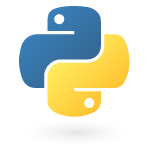Introduction to PyQt4
last modified October 18, 2023
This is an introductory PyQt4 tutorial. The purpose of this tutorial is to get you started with the PyQt4 toolkit. The tutorial has been created and tested on Linux.
About PyQt4
PyQt4 is a toolkit for creating GUI applications. It is a blending of Python programming language and the successful Qt library. Qt library is one of the most powerful GUI libraries. The official home site for PyQt4 is on www.riverbankcomputing.co.uk/news. PyQt4 is developed by Riverbank Computing.
PyQt4 is implemented as a set of Python modules. It has 440 classes and 6000 functions and methods. It is a multiplatform toolkit which runs on all major operating systems, including Unix, Windows, and Mac OS. PyQt4 is dual licensed. Developers can choose between a GPL and a commercial license. Previously, GPL version was available only on Unix. Starting from PyQt version 4, GPL license is available on all supported platforms.
PyQt4's classes are divided into several modules:
- QtCore
- QtGui
- QtNetwork
- QtXml
- QtSvg
- QtOpenGL
- QtSql
The QtCore module contains the core non GUI functionality. This
module is used for working with time, files and directories, various data
types, streams, URLs, mime types, threads or processes. The QtGui
module contains the graphical components and related classes. These include
for example buttons, windows, status bars, toolbars, sliders, bitmaps,
colours, and fonts. The QtNetwork module contains the classes for
network programming. These classes facilitate the coding of TCP/IP and UDP clients and
servers by making the network programming easier and more portable.
The QtXml contains classes for working with XML files. This module
provides implementation for both SAX and DOM APIs.
The QtSvg module provides classes for displaying the contents of
SVG files. Scalable Vector Graphics (SVG) is a language for describing
two-dimensional graphics and graphical applications in XML.
The QtOpenGL module is used for rendering 3D and 2D graphics
using the OpenGL library. The module enables seamless integration of
the Qt GUI library and the OpenGL library. The QtSql module
provides classes for working with databases.
Python
 Python is a general-purpose, dynamic, object-oriented programming language.
The design purpose of the Python language emphasizes programmer productivity
and code readability. Python was initially developed by Guido van Rossum.
It was first released in 1991. Python was inspired by ABC, Haskell, Java, Lisp, Icon,
and Perl programming languages. Python is a high-level, general purpose,
multiplatform, interpreted language.
Python is a minimalistic language. One of its most visible features is that it does
not use semicolons nor brackets. It uses indentation instead.
There are two main branches of Python currently: Python 2.x and Python 3.x. Python 3.x
breaks backward compatibility with previous releases of Python. It was created to
correct some design flaws of the language and make the language more clean.
Python is maintained by a large group of volunteers worldwide. Python is open source software.
Python is an ideal start for those who want to learn programming.
Python is a general-purpose, dynamic, object-oriented programming language.
The design purpose of the Python language emphasizes programmer productivity
and code readability. Python was initially developed by Guido van Rossum.
It was first released in 1991. Python was inspired by ABC, Haskell, Java, Lisp, Icon,
and Perl programming languages. Python is a high-level, general purpose,
multiplatform, interpreted language.
Python is a minimalistic language. One of its most visible features is that it does
not use semicolons nor brackets. It uses indentation instead.
There are two main branches of Python currently: Python 2.x and Python 3.x. Python 3.x
breaks backward compatibility with previous releases of Python. It was created to
correct some design flaws of the language and make the language more clean.
Python is maintained by a large group of volunteers worldwide. Python is open source software.
Python is an ideal start for those who want to learn programming.
This tutorial uses Python 2.x versions.
Python programming language supports several programming styles. It does not force a programmer to a specific paradigm. Python supports object-oriented and procedural programming. There is also a limited support for functional programming.
The official web site for the Python programming language is python.org
Perl, Python, and Ruby are widely used scripting languages. They share many similarities and they are close competitors.
Python toolkits
For creating graphical user interfaces, Python programmers can choose among three decent options: PyQt4, PyGTK, and wxPython.
This chapter was an introduction to PyQt4 toolkit.